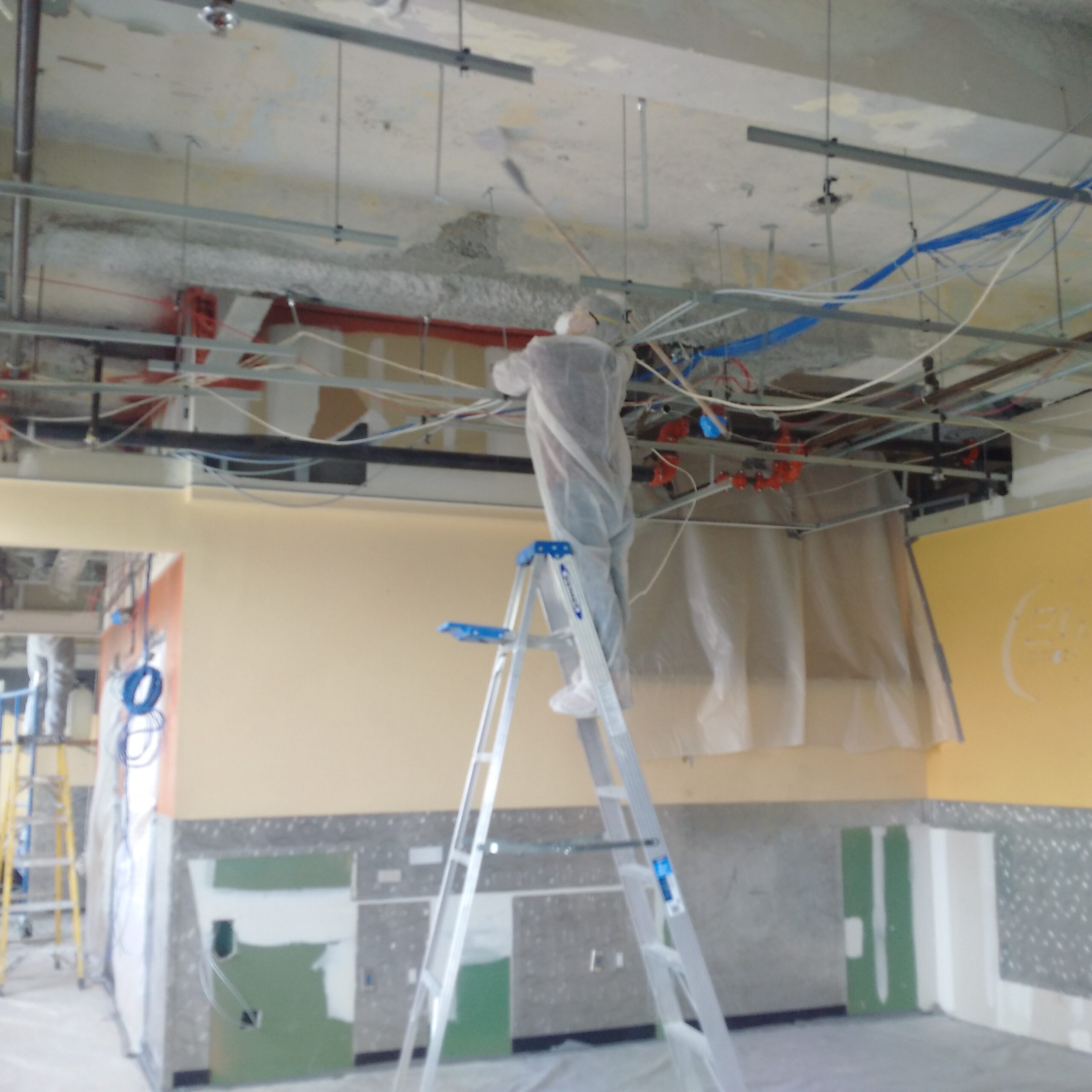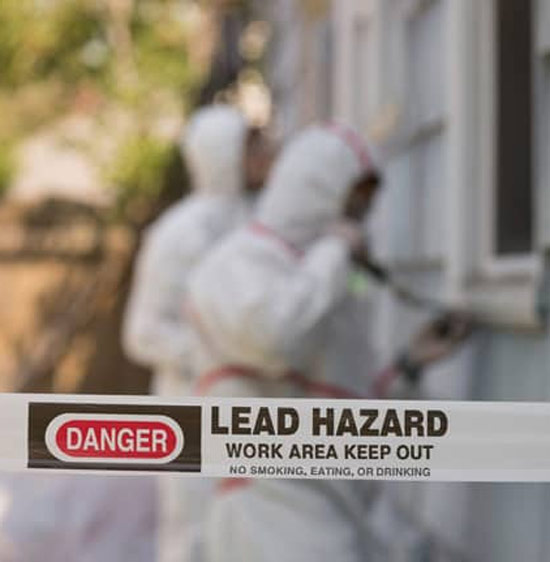DOH & HPD Lead Violation Removal NYC-- Expert Services for Compliance
Essential Tools and Strategies for Reliable Lead Offense Cleaning
Resolving lead violations properly necessitates a thorough method that mixes the right tools with calculated methodologies. Concurrently, the usage of specialized cleanup devices, such as HEPA vacuum cleaners and lead-specific cleaning representatives, is essential for complete contaminant elimination. Effective control approaches, including plastic sheet and unfavorable air stress systems, are essential to stop the spread of hazardous materials.
Personal Protective Tools
Individual protective tools (PPE) is a vital part in the reliable management of lead contamination cleanup. PPE works as a crucial obstacle, safeguarding workers from the harmful impacts of lead direct exposure, which can cause extreme wellness repercussions. The vital PPE for lead clean-up consists of respirators, safety garments, handwear covers, and eye defense. Each kind of tools is specifically designed to mitigate different risks connected with lead fragments and dust.
Respirators, particularly those outfitted with HEPA filters, are indispensable for filtering system air-borne lead bits, avoiding inhalation. Proper fit and seal checks are important to guarantee their effectiveness. Safety clothing, including coveralls and non reusable suits, stops lead dust from sticking to employees' garments, decreasing the risk of second contamination. Handwear covers, typically constructed from nitrile or latex, protect the skin from direct call with lead, while security goggles or full-face shields shield the eyes from dirt and debris.
Moreover, strenuous training on the appropriate usage and upkeep of PPE is vital. Workers need to be enlightened on putting on and doffing treatments to stay clear of contamination. Normal examinations and replacements of PPE parts are required to keep their protective abilities, ensuring a risk-free and certified cleanup procedure.
Specialized Cleanup Equipment

One more crucial tool is the wet/dry vacuum, which can efficiently cleanse up both dust and liquid impurities. These vacuums typically feature HEPA filters to give an additional layer of safety. Damp cleans or tack cloths are also essential for surface area cleaning; they are particularly created to record and hold lead particles, minimizing the danger of spreading out contamination.
For even more persistent deposits, specialized lead-removal cleaner are required. These agents are developed to damage down lead fragments, making them easier to remove. Scrub brushes with durable bristles can help in this procedure, specifically on harsh surface areas where lead dust tends to adhere much more strongly.
Furthermore, encapsulants are utilized to seal lead-contaminated surfaces, protecting against the launch of lead dirt. These specialized paints and finishes are made to follow numerous substrates, offering a long-lasting option for lead control.
Efficient Containment Techniques
Efficient containment approaches are critical in alleviating the spread of lead contamination during cleanup tasks. Implementing durable official website containment strategies makes certain that lead fragments do not move to unaffected locations, thus shielding both workers and the environment (DOH & HPD Lead Violation Removal NYC).

To boost control, encapsulants can be applied to surface areas that are not being eliminated or disturbed. These specialized layers bind lead dust, reducing its accessibility for resuspension. Furthermore, all personnel need to wear ideal Personal Safety Equipment (PPE), consisting of respirators and disposable matches, to stop contamination spread.
Safe Disposal Practices
Ensuring risk-free disposal techniques is an important component in the administration of lead contamination cleanup. Appropriate disposal mitigates the danger of lead coming back the environment and jeopardizing public health. The very first step is to determine and segregate lead-contaminated waste from other Bonuses products. Secure containment making use of heavy-duty, leak-proof containers is necessary to stop splilling during transport.
Moving lead waste requires adherence to strict guidelines. Utilizing accredited contaminated materials service providers guarantees that the materials are managed sensibly. Documents, consisting of shows up describing the type and amount of waste, should accompany shipments to track the waste from the site of origin to its final disposal destination.
Designated contaminated materials disposal facilities are furnished to manage lead-contaminated products safely. These facilities typically utilize sophisticated methods such as stabilization, solidification, or chemical treatment to reduce the effects of the lead before disposal. Landfilling in specialized, lined areas that prevent leachate from infecting groundwater is an usual technique for last disposal.
Routine training for employees involved in lead waste disposal is important to maintain safety criteria and avoid unexpected exposure. By sticking to these techniques, organizations can considerably reduce the ecological and health influences linked with lead contamination.
Regulatory Compliance Tips

Abiding by regulative compliance is vital in the successful execution of lead contamination cleaning. Recognizing and complying with federal, state, and neighborhood policies ensures not just the safety and health of people but likewise the lawful and monetary well-being of the clean-up company. The Epa (EPA) establishes stringent requirements, such as the Lead Renovation, Repair Service, and Painting (RRP) Policy, which mandates correct qualification and training for specialists dealing with lead-based tasks.
Compliance starts with a thorough evaluation of relevant laws and policies. Organizations needs to remain updated on any kind of legislative changes, which can be assisted in through routine training sessions and registering for sector updates. Documentation is another crucial compliance element; keeping detailed records of all activities, including inspection reports, employee training logs, and disposal manifests, is vital.
Moreover, engaging with certified lead inspectors or risk assessors ensures that lead hazards are correctly identified and mitigated. Employers should impose making use of Personal Protective Tools (PPE) and make certain that safety and security methods are strictly followed. Clear communication with stakeholders, including staff read more members, clients, and regulatory bodies, will certainly promote a culture of conformity and responsibility, eventually adding to a more secure and much more efficient lead cleaning process.
Final Thought
Effective lead violation cleaning requires the integration of specialized devices and tactical techniques to make sure security and efficacy. Making use of HEPA vacuums, specialized cleansing agents, and reliable containment approaches such as plastic sheet and negative air stress systems is imperative. Individual safety devices (PPE) safeguards employees from exposure, while secure disposal practices and strict adherence to regulatory compliance are essential for properly taking care of dangerous waste. Jointly, these measures dramatically alleviate health dangers and add to a cleaner environment.